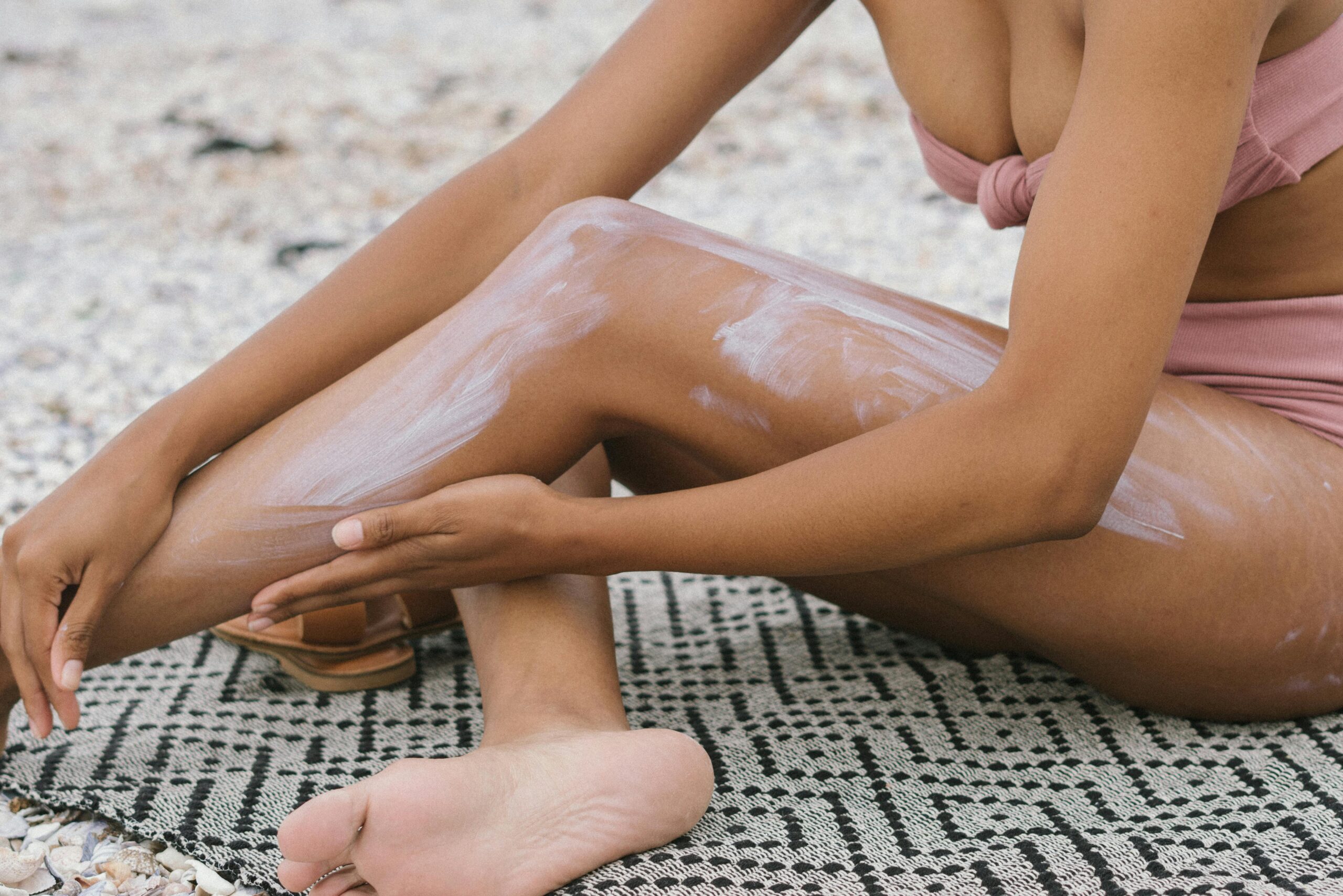Sunscreen is often hailed as the most important step in any skincare routine—and for good reason. It protects your skin from harmful UV rays, prevents premature aging, and reduces the risk of skin cancer. Yet, many people still skip this crucial step or use it incorrectly. In this ultimate guide, we’ll explore why sunscreen is a must for every skin type, how to choose the right one, and tips for proper application. Let’s dive in!
1. Why Sunscreen is Non-Negotiable
The sun emits two types of harmful ultraviolet (UV) rays: UVA and UVB.
- UVA Rays: Penetrate deep into the skin, causing premature aging, wrinkles, and dark spots.
- UVB Rays: Burn the outer layer of the skin, leading to sunburns and increasing the risk of skin cancer.
Sunscreen acts as a shield, protecting your skin from these damaging effects. Here’s why it’s essential:
- Prevents Premature Aging: UV rays break down collagen and elastin, leading to sagging and wrinkles.
- Reduces Hyperpigmentation: Sun exposure can worsen dark spots and melasma.
- Lowers Skin Cancer Risk: Regular use of sunscreen reduces the risk of melanoma and other skin cancers.
2. How to Choose the Right Sunscreen
With so many options available, choosing the right sunscreen can be overwhelming. Here’s what to look for based on your skin type and needs:
For All Skin Types:
- Broad-Spectrum Protection: Protects against both UVA and UVB rays.
- SPF 30 or Higher: Provides adequate protection for daily use.
- Water-Resistant: Ideal for swimming or sweating.
For Oily or Acne-Prone Skin:
- Oil-Free Formulas: Won’t clog pores or cause breakouts.
- Matte Finish: Controls shine throughout the day.
- Lightweight Texture: Gel or fluid sunscreens are ideal.
For Dry Skin:
- Hydrating Ingredients: Look for hyaluronic acid, glycerin, or ceramides.
- Cream-Based Formulas: Provide extra moisture.
For Sensitive Skin:
- Mineral Sunscreens: Contain zinc oxide or titanium dioxide, which are less likely to irritate.
- Fragrance-Free: Reduces the risk of allergic reactions.
For Dark Skin Tones:
- Sheer Formulas: Avoid white cast; look for tinted sunscreens.
- Non-Comedogenic: Won’t clog pores or cause breakouts.
3. Types of Sunscreen
There are two main types of sunscreen: chemical and mineral.
Chemical Sunscreens:
- How They Work: Absorb UV rays and convert them into heat, which is then released from the skin.
- Key Ingredients: Oxybenzone, avobenzone, octinoxate.
- Pros: Lightweight, easy to blend, ideal for everyday use.
- Cons: Can irritate sensitive skin; may need to reapply more frequently.
Mineral Sunscreens:
- How They Work: Sit on the skin’s surface and physically block UV rays.
- Key Ingredients: Zinc oxide, titanium dioxide.
- Pros: Gentle on sensitive skin; provide immediate protection.
- Cons: Can leave a white cast; may feel heavier on the skin.
4. How to Apply Sunscreen Correctly
Proper application is key to ensuring your sunscreen works effectively. Follow these steps:
- Apply Generously: Use about a teaspoon of sunscreen for your face and a shot glass-sized amount for your body.
- Cover All Areas: Don’t forget your ears, neck, hands, and feet.
- Reapply Regularly: Reapply every 2 hours, especially after swimming, sweating, or towel drying.
- Layer Wisely: Apply sunscreen as the last step in your skincare routine but before makeup.
5. Common Sunscreen Myths Debunked
Let’s clear up some misconceptions about sunscreen:
- Myth 1: “I don’t need sunscreen on cloudy days.”
Fact: Up to 80% of UV rays can penetrate clouds, so sunscreen is a must every day. - Myth 2: “Dark skin doesn’t need sunscreen.”
Fact: While melanin offers some natural protection, dark skin is still susceptible to UV damage and skin cancer. - Myth 3: “Makeup with SPF is enough.”
Fact: Most makeup doesn’t provide adequate coverage or protection. Always use a dedicated sunscreen.
6. Sunscreen and Anti-Aging
Sunscreen is your best defense against premature aging. Studies show that regular use can reduce the appearance of wrinkles, fine lines, and dark spots. Pair it with antioxidants like vitamin C for added protection against free radicals.
7. Sunscreen for Different Activities
Your sunscreen needs may vary depending on your activities:
- Everyday Use: A lightweight, broad-spectrum SPF 30 is perfect for daily wear.
- Outdoor Sports: Opt for a water-resistant, high-SPF formula (SPF 50+).
- Beach Days: Use a water-resistant sunscreen and reapply frequently. Don’t forget lip balm with SPF!
8. Tips for Encouraging Sunscreen Use
- Make It a Habit: Incorporate sunscreen into your morning routine.
- Keep It Handy: Store sunscreen in your bag, car, or desk for easy access.
- Lead by Example: Encourage friends and family to use sunscreen too.
9. Product Recommendations
Here are some top-rated sunscreens for different skin types:
- Oily Skin: La Roche-Posay Anthelios Clear Skin Dry Touch Sunscreen SPF 60
- Dry Skin: CeraVe Hydrating Mineral Sunscreen SPF 30
- Sensitive Skin: EltaMD UV Clear Broad-Spectrum SPF 46
- Dark Skin Tones: Black Girl Sunscreen SPF 30
- Everyday Use: Supergoop! Unseen Sunscreen SPF 40
10. Conclusion
Sunscreen is a non-negotiable part of any skincare routine, regardless of your skin type or tone. It protects your skin from harmful UV rays, prevents premature aging, and reduces the risk of skin cancer. By choosing the right sunscreen and applying it correctly, you can enjoy healthier, more radiant skin for years to come.
For more skincare tips and product recommendations, subscribe to Universo Íntimo and follow us on social media. Let’s protect and glow together!

